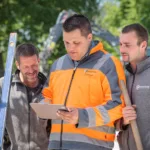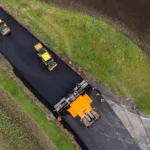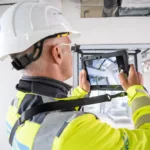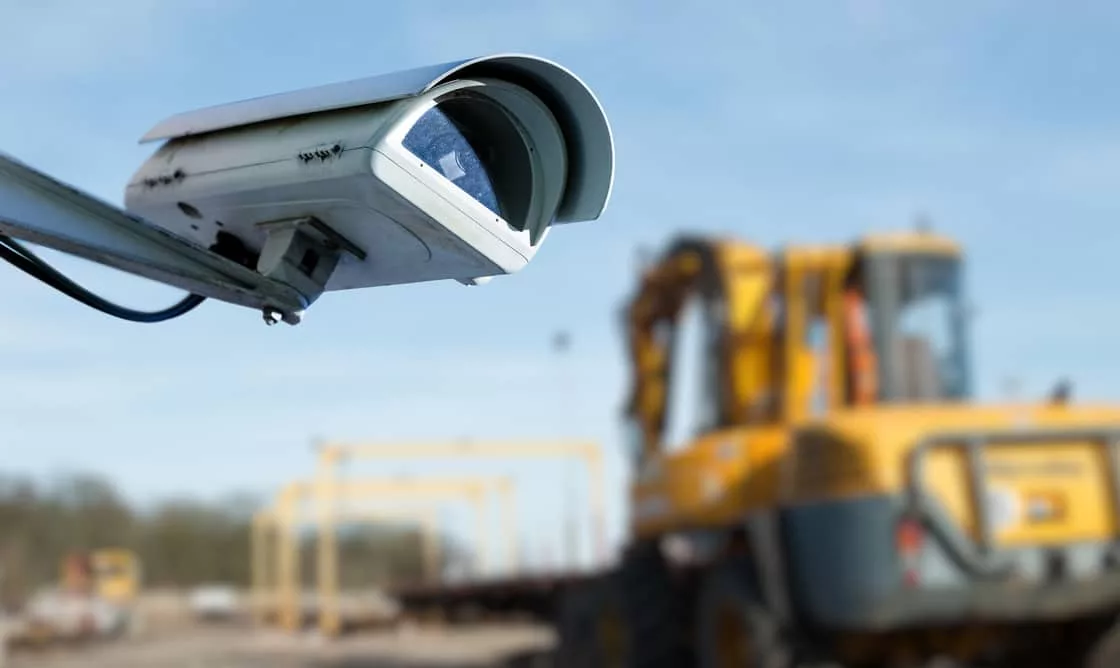
What you should consider when video monitoring your construction site and what alternatives there are for you
Cameras and drones are now increasingly used to monitor construction sites day and night. However, there are some pitfalls to be aware of, especially since the legal situation is constantly changing. When video surveillance makes sense and what simple alternatives there are for some applications, you will learn in this article.
Video surveillance for contractors – the most common applications
Many construction companies use video surveillance for various purposes. Construction site monitoring plays a central role, especially on large construction sites.
Use case 1: Video surveillance protects against theft and vandalism
Even vacant lots, warehouses, sand and gravel pits or dumps and landfills can be secured with modern video surveillance. The main issue here is protection against vandalism and theft. Because video surveillance has a high preventive effect: it effectively deters thieves.
If things are destroyed or stolen despite surveillance technology, the system usually triggers an alarm. External security services or the responsible police are notified and are thus quickly at the scene. Thieves can also be caught more quickly, because the records help in the investigation.
Use Case 2: Photo surveying with drones
In addition to video cameras, drones are increasingly being used on construction sites. They are particularly suitable for measurements and condition surveys of the construction site area. Drones create aerial photographs and document the current condition, especially for large-scale construction projects. With the help of measuring methods such as photogrammetry or laser scanning, it is also easier to document a terrain. The plus point: photo measurement works in a short time and with high data quality.
Use case 3: Construction documentation by video and drones
In addition to securing construction sites against theft and vandalism, some companies also use video surveillance via camera or drone for construction documentation. Regularly taken pictures then provide a clear documentation of the construction progress in fast motion – and also serve as evidence for the building owner in case of doubt.
You want to know more?
The publisher for legal protection offers an up-to-date overview of the legal circumstances surrounding the topic of video surveillance.
Video surveillance and the GDPR
Generally, you may video monitor your construction site. You have a legitimate interest in the safety of your construction site and you exercise your domiciliary rights by monitoring it. Modern technology for video surveillance can therefore seem tempting. However, there are numerous pitfalls that you should be aware of so that there is no conflict with the General Data Protection Regulation (GDPR).
Video surveillance can quickly lead to problems with personal data.
It becomes difficult, for example, when people are filmed in addition to the actual construction site – regardless of whether they are your own employees, subcontractors who were working on the construction sites, or unknown third parties. If the recordings can be used to monitor all of the employees’ work processes, video surveillance is not permitted, for example. The same applies to craftsmen, construction managers or architects who are on duty at your construction sites.
You also need to be careful that neighboring properties do not appear in the video footage.
Checklist: Here’s what you should consider when video monitoring your construction site
- Make only overview photos of the construction progress. The working persons must not be identifiable on it.
- Neighboring properties and the publicly accessible space around the construction site shall not be covered.
- Put up highly visible signs indicating video surveillance. This is the only way to comply with your transparency obligations under the General Data Protection Regulation (GDPR).
- People must be pixelated or – even better – should not appear on the images at all.
- Compliance with legal requirements for the storage of all data through the video recordings is important.
Advice: Get legal counsel before installing video surveillance on your construction site.
Ensure that site monitoring is GDPR compliant. Under no circumstances should you use mobile or fixed cameras or drones yourself. This is because the applicable rules for video surveillance must be complied with.
Choose a professional provider for video surveillance of your construction sites – even though the technology is now available everywhere at reasonable prices.
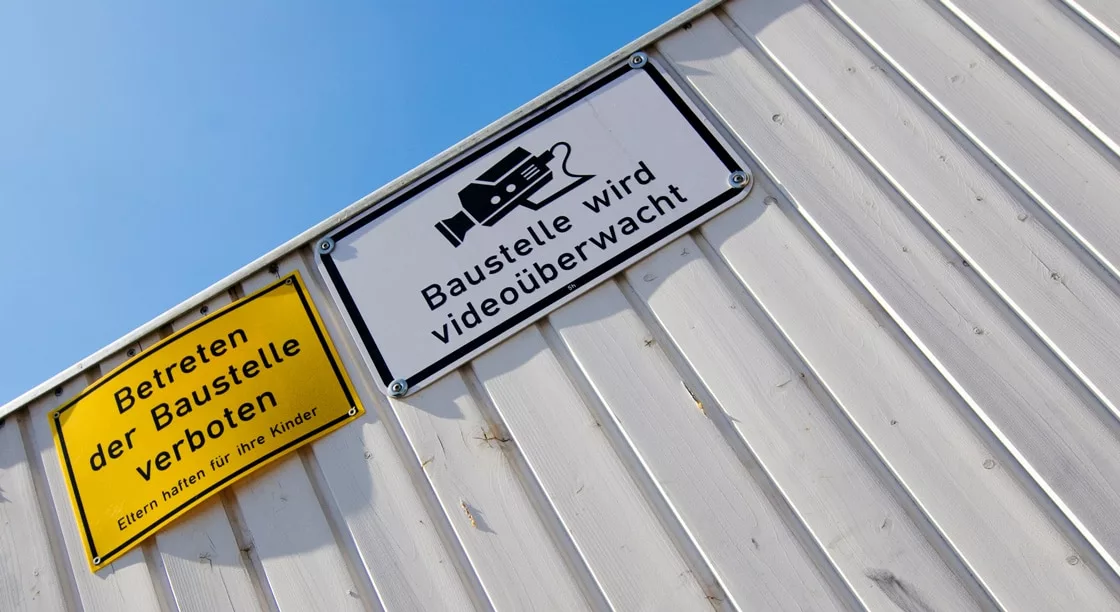
Choose robust technology for your video surveillance
Dirt, water, weather and extreme temperature fluctuations – the equipment on construction sites is exposed to some adverse influences. Accordingly, it is necessary to use technology suitable for the construction site. This is especially true for sensitive digital technology such as a construction site smart phone or cameras for video surveillance. Choose devices that are suitable for this purpose.
GPS tracking – alternative to video surveillance
However, it does not always have to be video surveillance to monitor a construction site. There are also other ways, such as tracking the whereabouts of your equipment. This way, you avoid running afoul of the GDPR. Programs such as 123fleet, for example, which work with GPS tracking of construction equipment, transmit the current position of the work equipment. The tracking of machines can also be directly linked to deployment planning. This way you always have an overview of your fleet of machines and can efficiently plan how to use machines and avoid unnecessary routes.
Advice: think about why you want to use video surveillance on the construction site and whether there are easier options. And to return to the beginning of this article: The legal situation is constantly changing. Laws and regulations will then be adapted. We can therefore only provide a general overview here, but detailed legal advice is definitely advisable.
Photo credits: pixinoo/iStock via Getty Images; Ricardo Demurez via Getty Images
